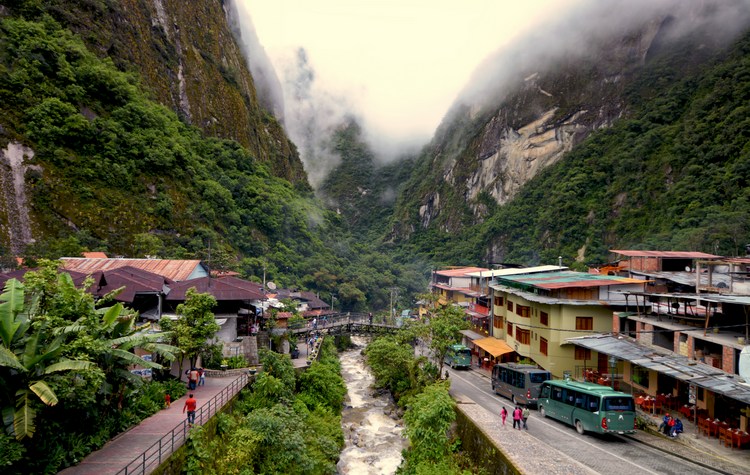
The mysterious land of Peru hosts a magnificent and diverse range of landscapes and ecosystems. It is also home to incredible sacred sites like Machu Picchu and Choquequirao, the Amazon rainforest and Andes mountains. Weather conditions are very different and vary across the country, but the rainy season in Peru happens to be one of the best times to pass by.
If you are thinking about traveling to Peru, but you are battling because the only time that you can get leave from work is during the rainy season in Peru, do not worry! This diverse country has different travel seasons and the rainy season in Peru offers many opportunities to explore and indulge in the local culture, mysterious history, and natural wonders.
So, if your next international trip to South America falls under the rainy season in Peru, you will most likely experience clear mornings and late afternoon showers. The average monthly rainfall from the months of January to April is only around four inches, with January and February experiencing he highest rainfall.
So, pack your rain jacket, and keep reading to find out the 5 reasons to travel to Peru during the rainy season.
When is the rainy season in Peru?

Due to the incredibly diverse geography which is presented in different regions namely the coast, the rainforest, and the mountains – weather conditions in Peru are quite variable. Typically, the wet season in Peru is from November to March with warmer temperatures and intermittent showers.
There is little to almost no rain in the Andes region during the months of May to October. This is probably the best time for long, extensive hikes. The rainy season in Peru is mainly from December to March, and as you will find out now – offer a variety of excursions and expeditions to take on.
When traveling in the rainy season, utmost comfort is a definite! When it comes to accommodation around Machu Picchu, Inkaterra is a category all on its own. At the top of luxury travel in Peru, Inkaterra is more than a hotel – it’s a veritable retreat.
5 Reasons to travel to Peru during the rainy season:
1. Less Crowds

The dry season is the obvious busy time of the year for tourists traveling to Peru, as it promises clear skies and almost no rain, but it also means that popular places such as Cusco, Machu Picchu and the Inca Trail are very crowded. This is apparent especially in the months of June to August, where these popular tourist destinations can be very overcrowded at times.If you prefer more space and time to explore and wander around the sacred sites of the land, then visiting Peru during the rainy season is probably a better idea. Even though the Inca Trail may be closed during a short period in February, the Machu Picchu remains open. This makes the rainy season the ideal time to visit for those who really want to avoid crowds, and who don’t mind dealing with a little bad weather in the late afternoons.
2. Warmer Weather

The rainy season in Peru also happens to be the warmest time of the year in the country. The low season with its lesser crowds, is summer in the Southern Hemisphere, and it is a great time to visit some of the higher altitude destinations with typically colder weather like Colca Canyon and Puno.You will probably only need your new alpaca poncho during the short afternoon showers, that tend to pass quickly – and open up to warm, clear skies. Days are warmer, which make sightseeing expeditions more pleasant. Take note that in February it usually rains a lot in Machu Picchu – so the best time to visit would be after February.
3. No Advanced Bookings

When traveling to Peru, one of the main things that travelers usually prepare is making advanced bookings for world-famous sites like Machu Picchu, or booking a trek with one of the many professional companies for the Inca Trail, or other popular mountain trails. Unlike the dry season, you don’t have to book months in advance if you are planning to come during the rainy season. During the wet season it is possible to make a booking approximately 4-6 weeks in advance, or you can even take the chance to book an expedition if you change your mind, when you are already in Peru.Take note: If you’re thinking of hiking the Inca Trail during the wet season, it is important to consider that it closes temporarily in February for maintenance.
4. Lush Green Sights

With all this heavenly water, the scenery in Peru during the rainy season is breathtaking! It is almost as if it wouldn’t be as beautiful if it didn’t rain. With the showers come the lush green hills of the Andes, the wildflowers bloom over the countryside and the terraces that were used to plant vegetables by ancient civilizations in the past are brightly colored with different wild plants and flowers.The freshness of the rainy season creates stunning sights, especially in the Sacred Valley and Colca Valley where you can see locals wearing their traditional clothing tending to their crops and animals in the fields. Painting a beautiful picture of serenity and calmness, and the fact that there are lesser crowds – make it all too special to put into words.
5. Cultural Celebrations

Other than boasting incredible landscapes, Peru has a very rich culture. Festivals and carnivals are hosted all year round to celebrate different customs, depending on the different regions of the country. Locals commit fully to these cultural celebrations and preparation for these events can take up to several weeks. One of the most important religious celebrations in Peru is the Virgin de Candelaria. It takes place in the city of Puno, and if you want to experience a real cultural immersion during the Peruvian rainy season, this festival is for you! You can expect to see more than forty musical groups from all over Puno wearing colorful costumes and performing high-energy shows.
Where to visit during the rainy season?

The official “beach season” in Peru starts in December. The temperatures on the coast are warmer and because there is not much rain yet, the waves are clear and the sun shines every day. The beaches are not really touched by the rain, like the highlands, and thus the summer months are the perfect time to soak up the sun in Miraflores, near Lima, or explore a surfer’s paradise, Mancora.
The Andes and higher altitude mountain planes have sunny mornings and rainy afternoons during the wet season. The afternoon showers tend to pass quickly, and sometimes leave an array of rainbows stretching over the sky from peak to peak. It is truly magical and an experience that can not be expressed in a photo.
Final thoughts: Rain vs. Dry Season

Peru is situated close to the equator which makes it a tropical country with a wet season and a dry season. There really is no “best time” to visit Peru, as it is complicated by high rainfall and the regional differences in weather conditions that appear across the entire land.
There are three distinct regions namely the desert coast, the Andean highlands and the Amazon rainforest. During the months of December to March it is the rainy season in Cusco, Arequipa, Huaraz and Puno with the most rain received during January and February. The temperatures are warm, which correlates with the southern hemisphere’s summer.
The highlands experience the dry season from May to September, accompanied by colder temperatures. This period marks the southern hemisphere’s winter. The shoulder months of April, October and November have more unpredictable weather, which may include a mix of sunny and rainy days.
Visit Peru with Kuoda
Peru is one of the top traveling destinations in South America, for good reason. It hosts one of the seven wonders of the world, Machu Picchu, it is home to the original ceviche recipe – and many other incredible Peruvian dishes, and it has rich culture from ancient civilizations and more recent Andean traditions.
We understand that planning for a cohesive trip, such as this one to the mysterious land of Peru, can be stressful and feel overwhelming – especially if you have a busy schedule and you do not have the time or energy to do the necessary research.
We at Kuoda are passionate about what we do, and there is a good reason that we have many happy clients that brag about their memorable experiences after trusting us to create a customized luxury travel itinerary for them.
Contact us today to discuss your personal needs and requirements and we can start planning your trip as soon as possible!
Peru’s Northern Beaches Travel Guide: Your Adventure-Filled Getaway
Bask in the northern BEACHERGOER’S PARADISE, With its dependable year-round sunshine, pristine coastline, s...
Read PostThe Most Eco-Friendly Hotels in South America For The Responsible Traveler
For the eco friendly hotels in South America, responsible travel in hospitality is not just a trend but a nece...
Read PostExplore Peru’s Sacred Valley: A Journey Through Incan Wonders
Experience a land BLESSED BY INCAS, Tucked away in the Andean foothills of Peru lies the historic Sacred Vall...
Read Post

 Call
Call 























